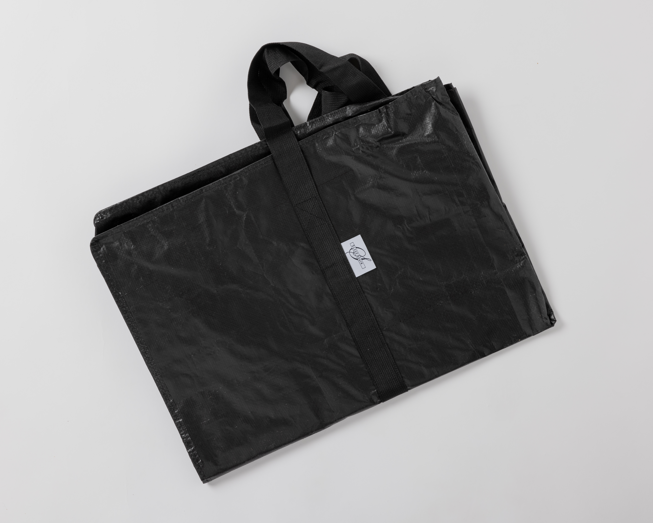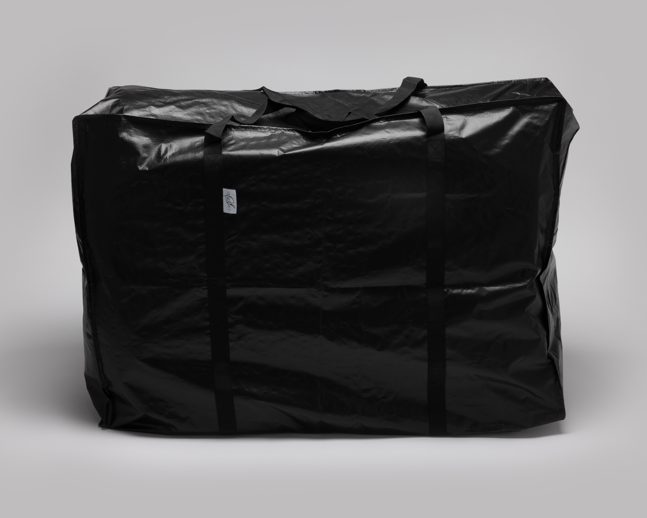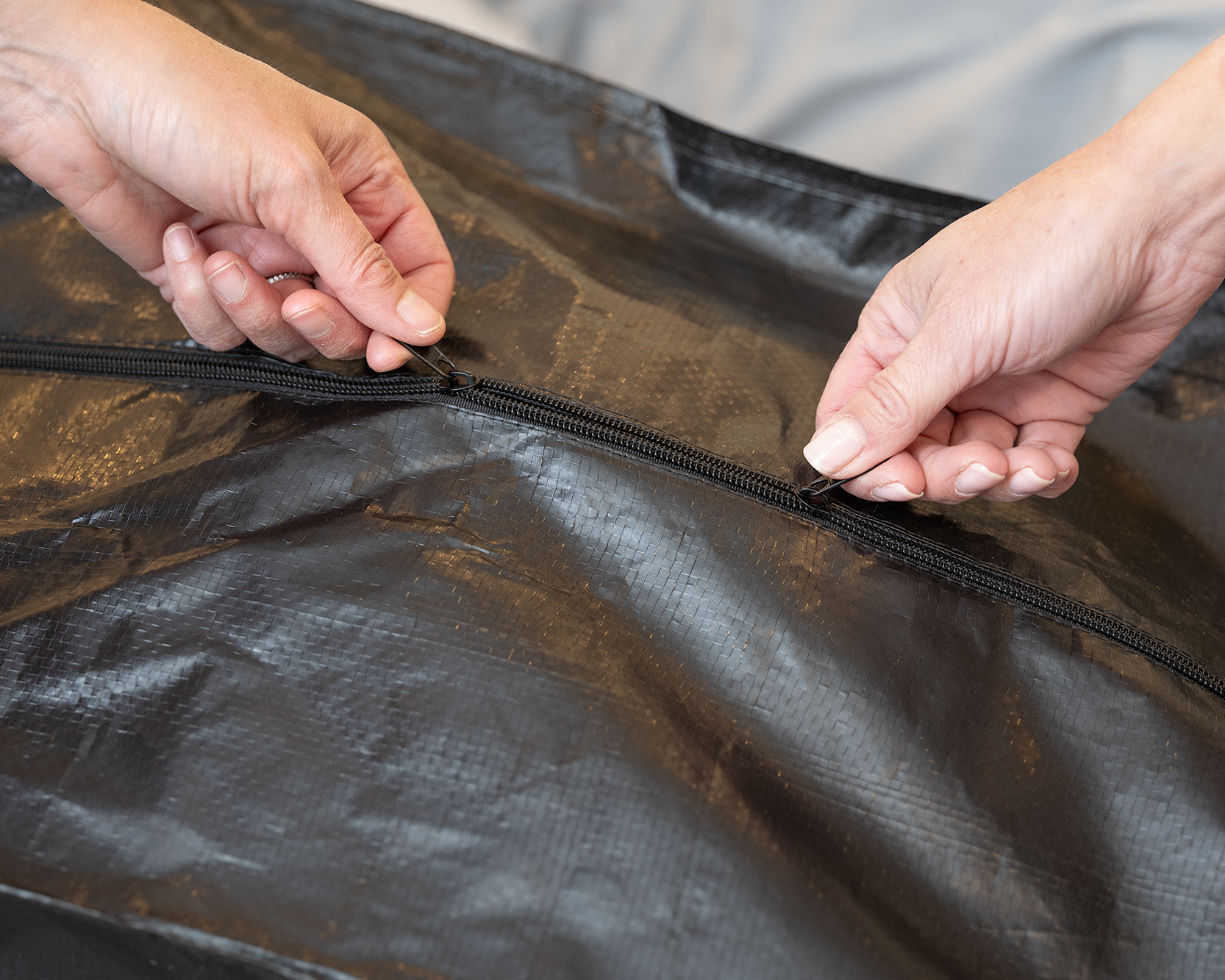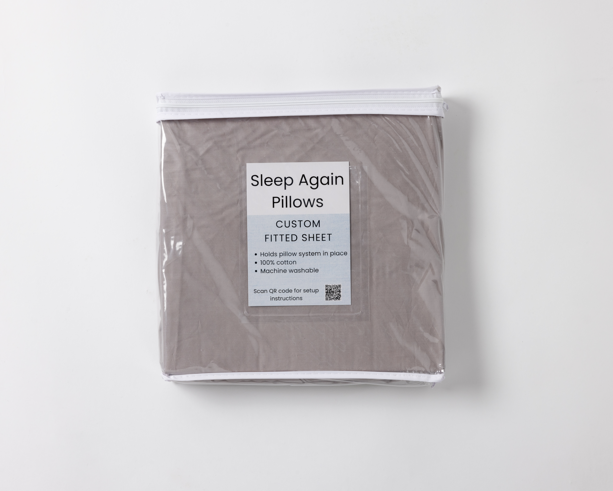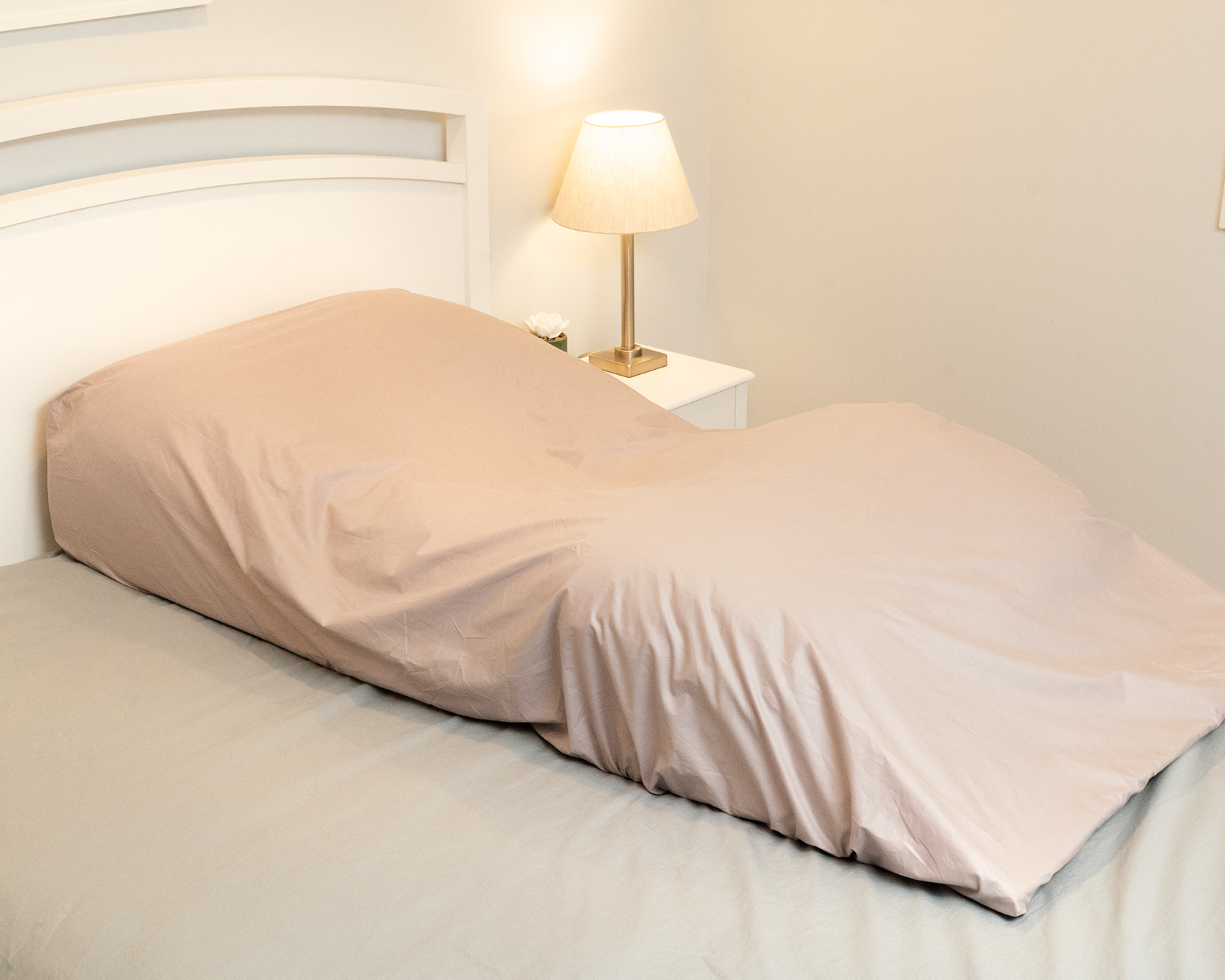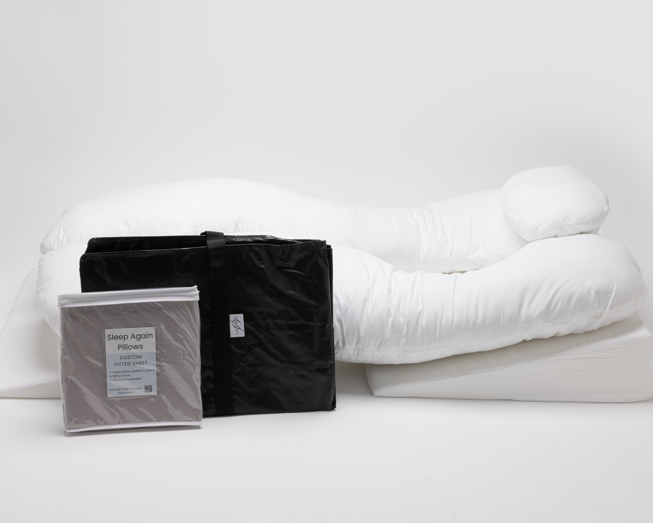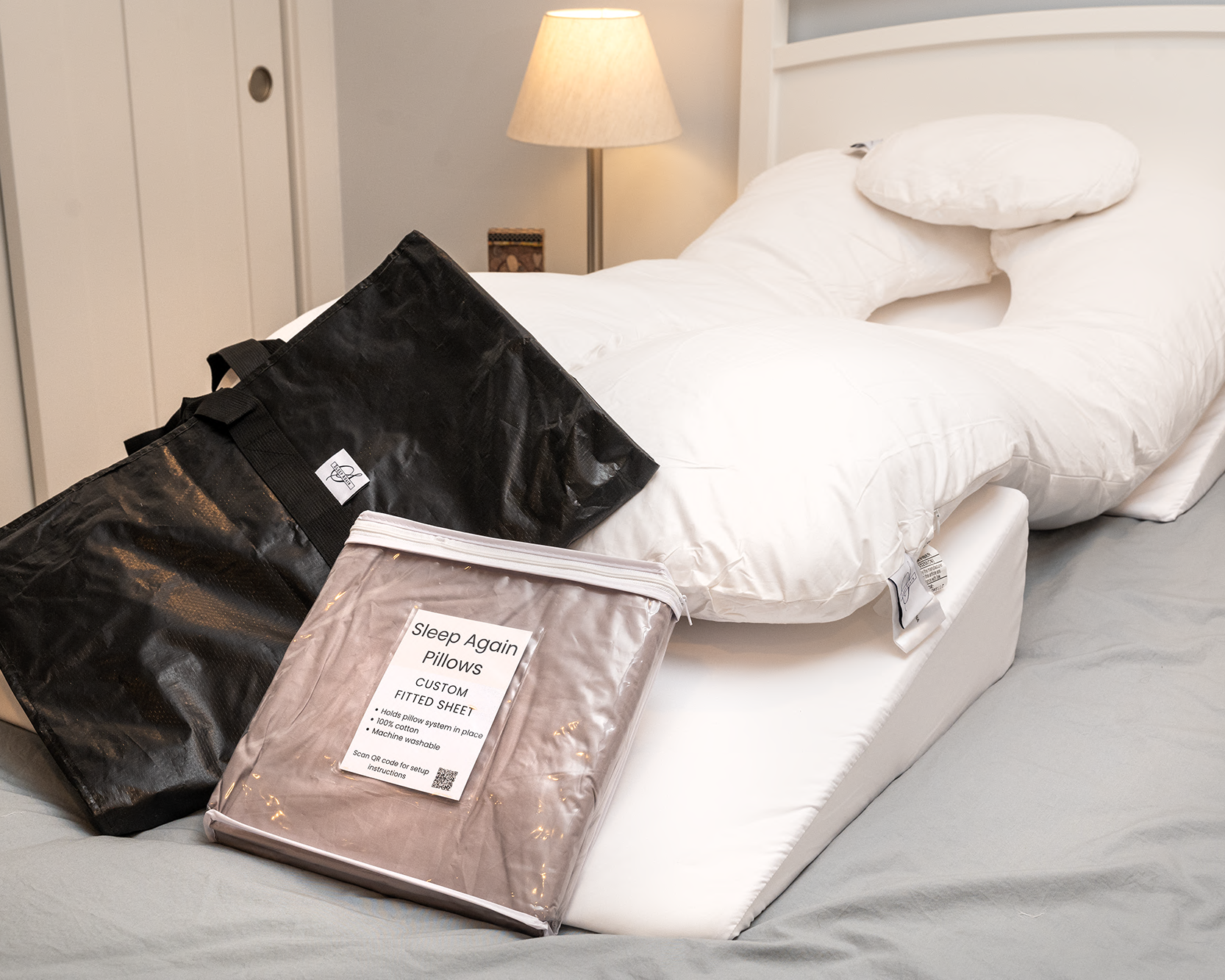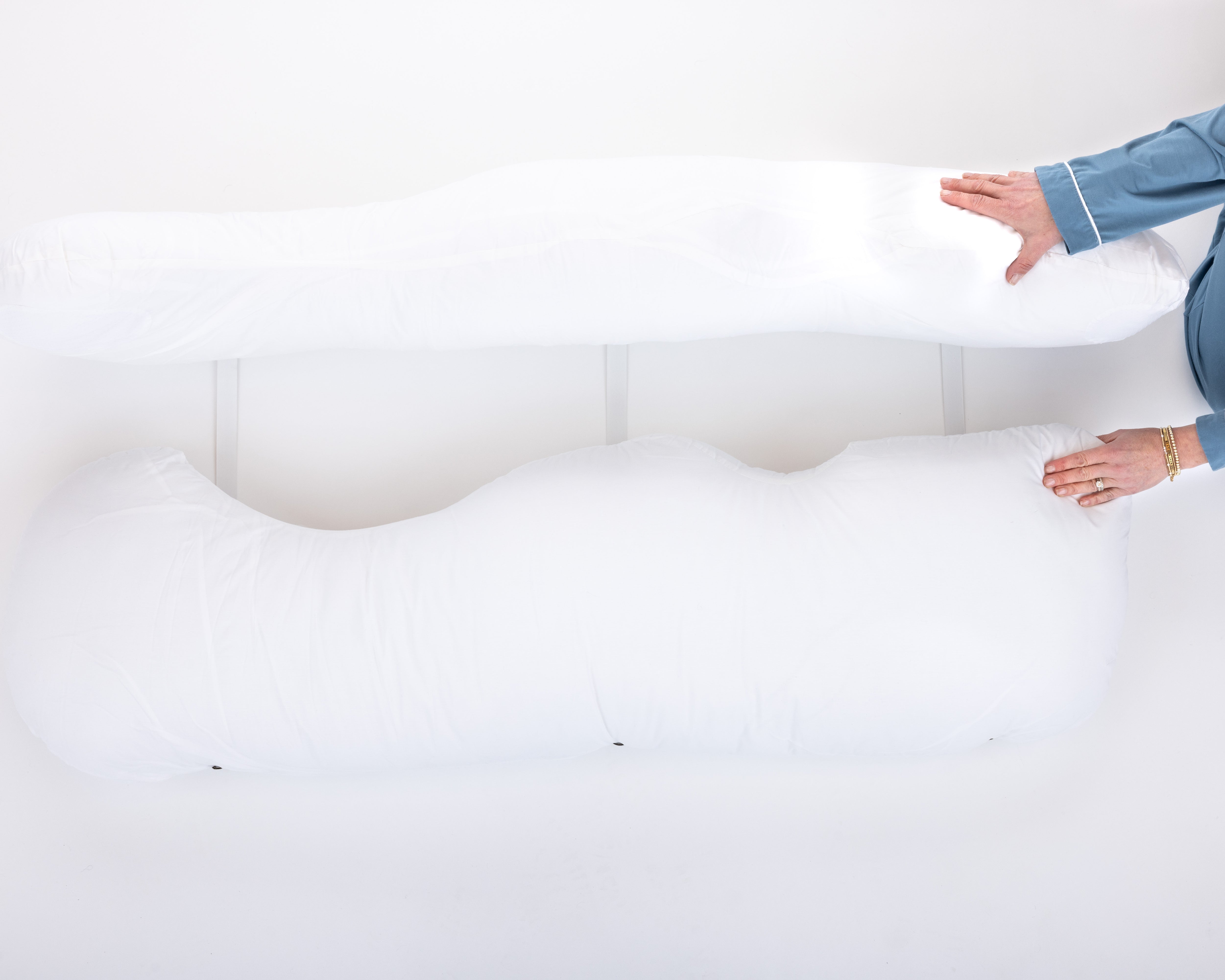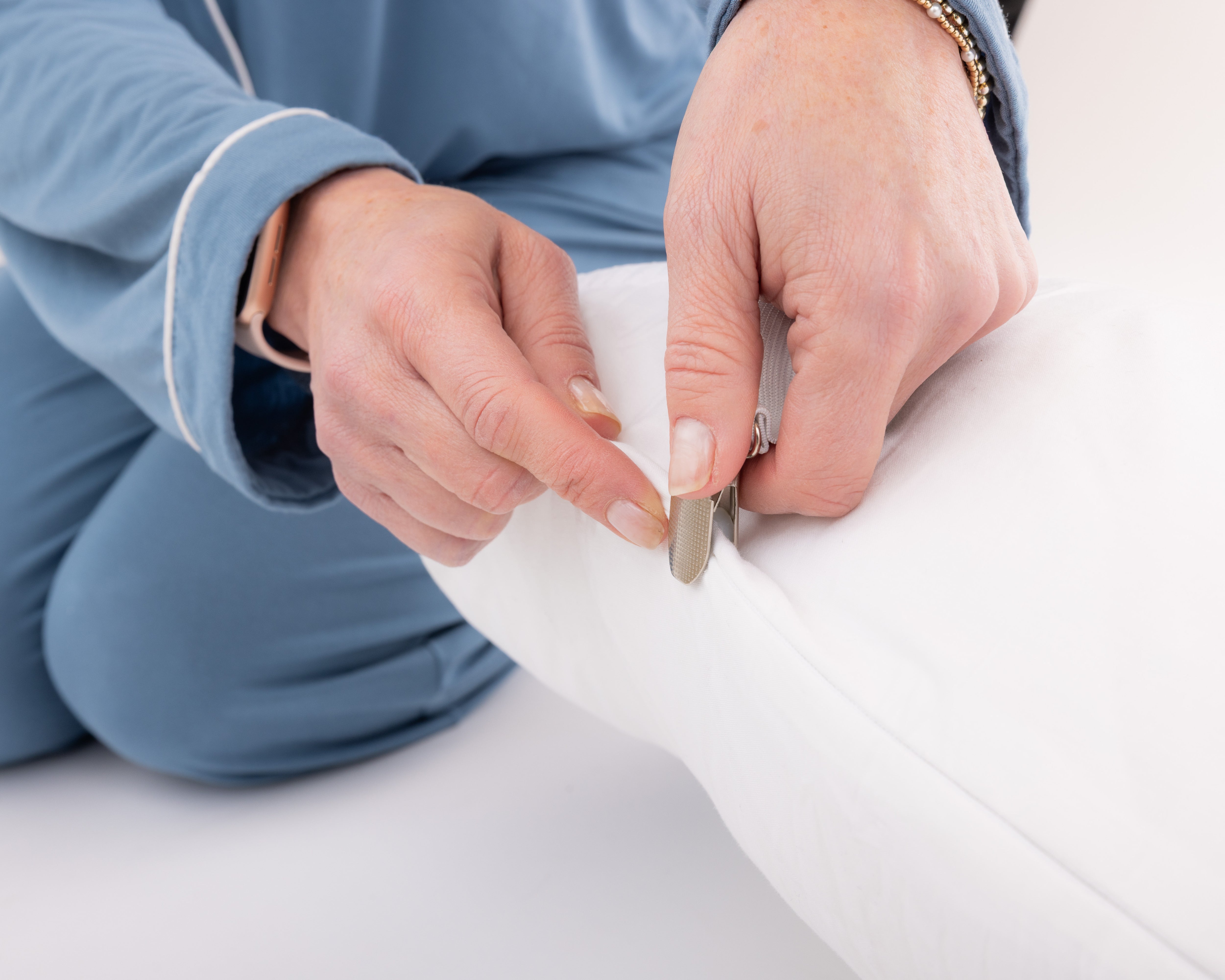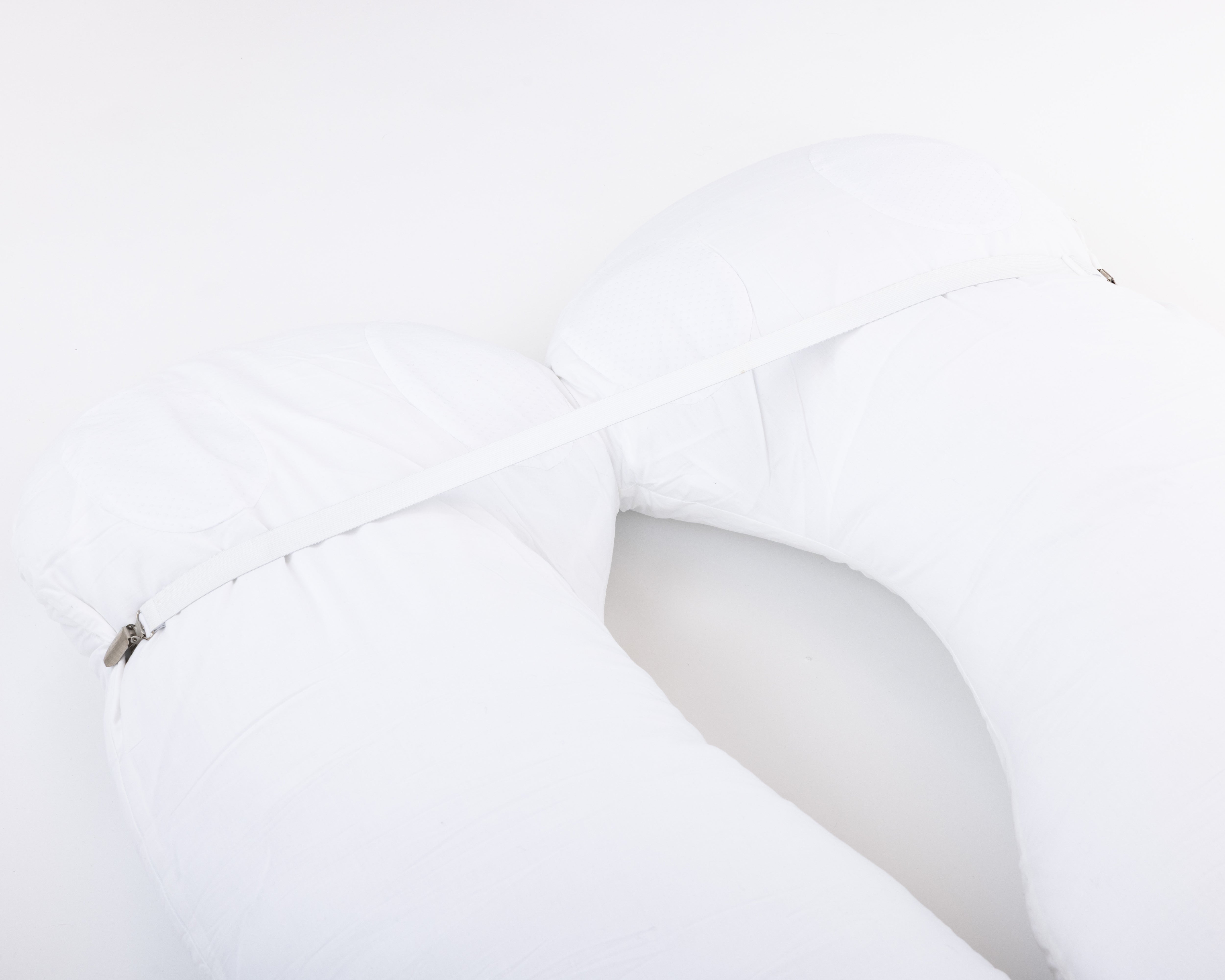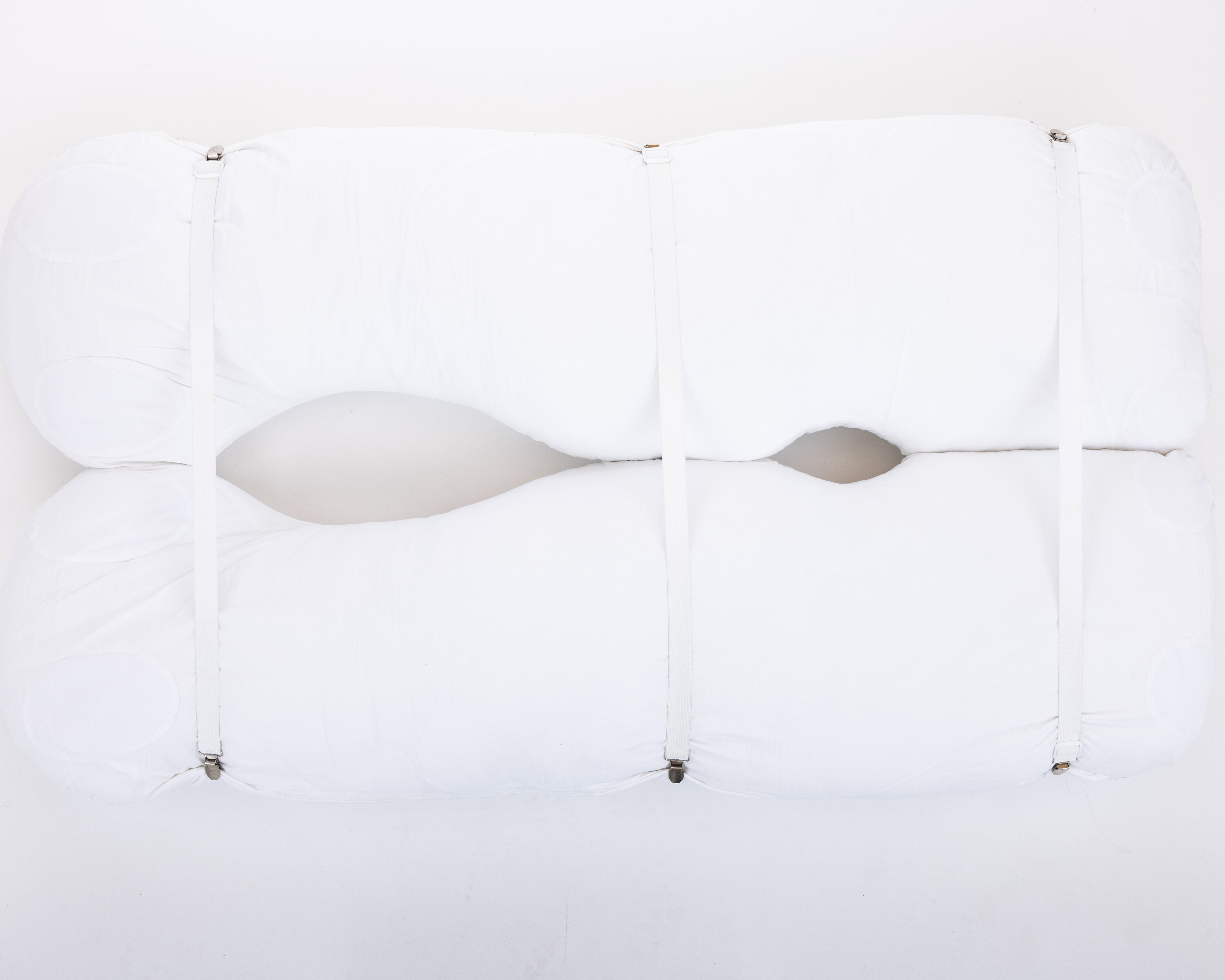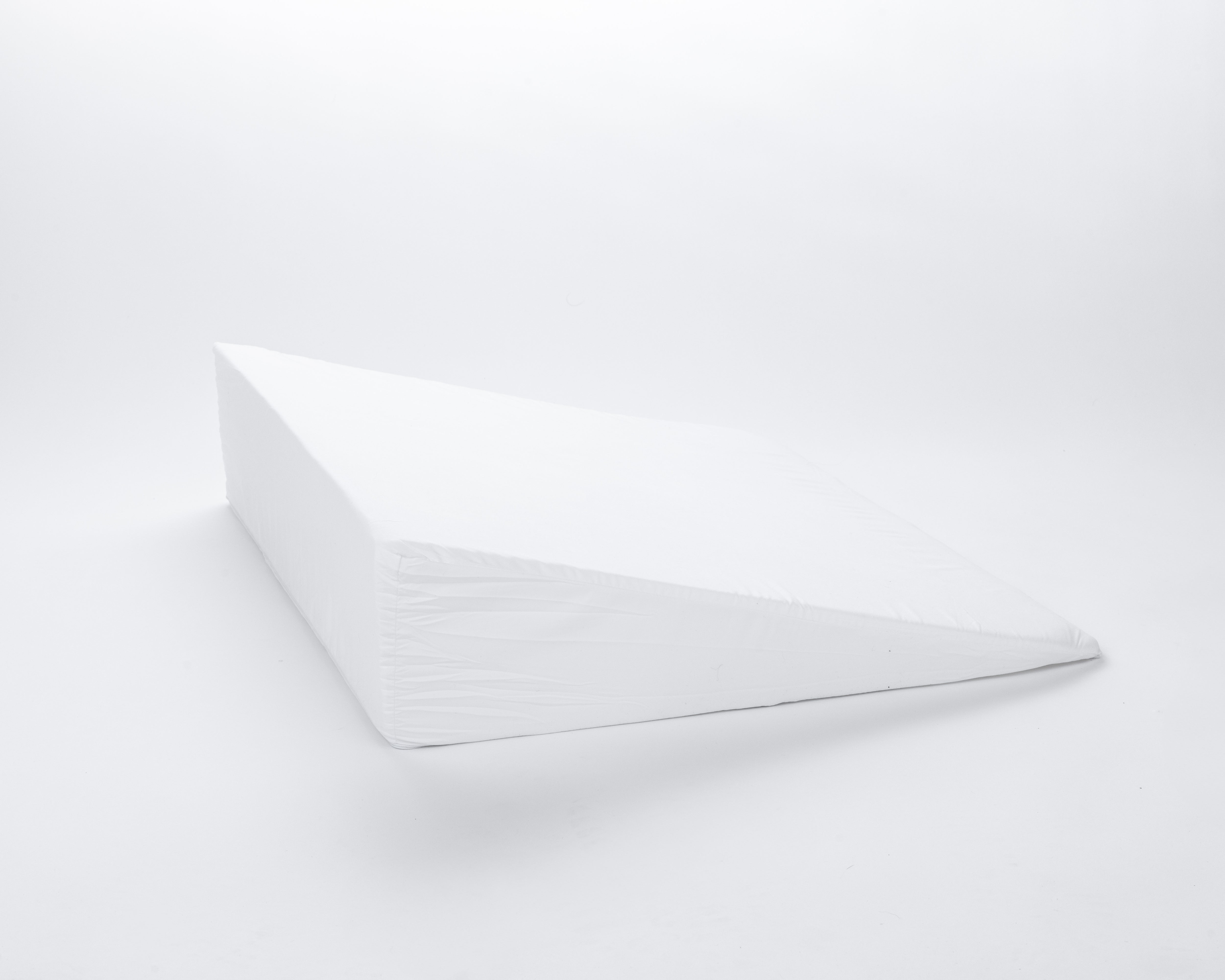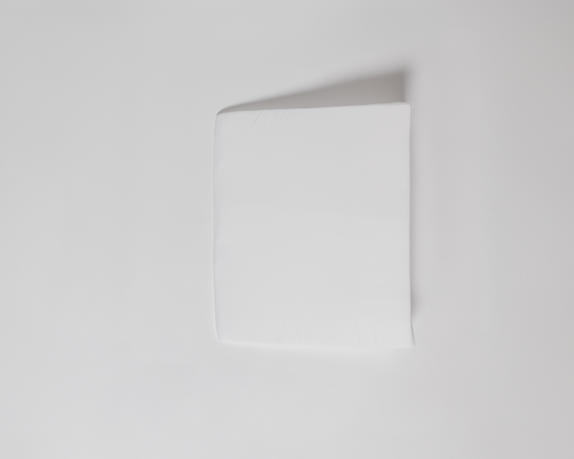Welcome to your post-gallbladder surgery sleep intervention. You've just survived what doctors cheerfully call "minimally invasive" surgery—a term that feels like a cosmic joke when you're lying in bed at 2 AM feeling like someone played connect-the-dots on your abdomen while inflating you like a party balloon.
This isn't another fluffy recovery blog that tells you to just rest and heal. This is your no-nonsense sleep survival guide designed to get you actually sleeping like a normal person without the usual recovery misery.
Time to reclaim your rest. You deserve it.
Your Sleep Recovery Assessment: Which Recovery Character Are You?
Before we dive into solutions, let's figure out exactly what phase of recovery adventure you're navigating right now.
The Fresh Surgery Survivor (Days 1-3)
You're in the "what fresh hell is this" phase where everything hurts in unexpected ways. That mysterious shoulder pain has you googling whether your surgeon accidentally operated on the wrong body part. You feel like someone inflated you with a bicycle pump, and every sleep position feels like a negotiation with gravity that you're definitely losing. Getting out of bed requires the same level of strategic planning as organizing a family reunion.
If this is you: Focus entirely on the Week 1 protocol below. Your main job right now is gas management and basic survival.
The Hopeful Improver (Days 4-7)
The good news: you're starting to feel slightly more human. The bad news: you're still sleeping like a broken robot. Your shoulder pain is backing down from "angry bear" to "annoyed cat," but your pillow fort keeps betraying you by collapsing in the middle of the night. You're eyeing your right side like it might be safe to try, but you're not quite brave enough yet.
If this is you: You're ready to start the Week 2 transition protocol and expand your position options carefully.
The Almost-There Warrior (Week 2+)
You can see the light at the end of the tunnel, but you're not quite there yet. Most of your pain is manageable, but comfort remains mysteriously elusive. You're starting to attempt your old sleep positions with the confidence of someone testing potentially thin ice. You might be ready to throw money at this problem if it means getting actual, honest-to-goodness sleep.
If this is you: Time for the advanced positioning strategies and possibly investing in proper recovery equipment.
The Impatient Overachiever (Any Phase)
You're the person trying to sleep on your stomach three days after surgery because "it doesn't hurt that much." You've convinced yourself that recovery timelines are suggestions rather than medical advice. You're probably reading this at 3 AM after discovering that your overconfidence resulted in very uncomfortable consequences.
If this is you: Take a step back to the phase that matches your actual surgery date, not your optimism level.
Your situation determines which parts of this prescription you need to focus on most. Don't worry about implementing everything at once—recovery is progressive, not perfectionist.
The Pre-Surgery Planner: Setting Yourself Up for Sleep Success
If you're reading this before your gallbladder surgery, you have a golden opportunity most patients miss: preparing your sleep environment while thinking clearly, not while dealing with gas pain and medication brain fog.
Why Pre-Planning Matters
Recovery starts the moment you get home from surgery. You'll be tired, uncomfortable, and dealing with gas pain that makes every position feel wrong. The last thing you want is spending your first night home playing pillow Jenga instead of healing.
Your post-surgery brain won't operate at full capacity. Pain medication and healing stress create decision fatigue—choices that seem obvious now become overwhelming in recovery mode.
Your Pre-Surgery Checklist
Test your setup: Sleep elevated at 45 degrees for one night using current pillows. This reveals what you'll actually need and prevents 3 AM emergencies.
Clear your space: Remove clutter and prepare room for positioning pillows and essentials like water and medications.
Plan your strategy: Whether going DIY or investing in a positioning system, have everything ready before surgery day.
Discuss partner arrangements: Recovery positioning takes more bed space. Plan now rather than negotiating at 2 AM.
The Prepared Patient Advantage
Patients who prepare before surgery report better first-week sleep quality, faster gas pain resolution, less recovery stress, and higher confidence handling recovery challenges.
For pre-surgery planners: The Sleep Again Pillow System eliminates positioning guesswork, letting you focus entirely on healing rather than pillow arrangements when uncomfortable.
The Gallbladder Surgery Sleep Prescription: Your Week-by-Week Protocol
Week 1: The Gas Management Phase
Primary Goal: Survive the CO2 gas effects and protect incision sites
Your Sleep Position Prescription:
-
Primary: Elevated back sleeping at 30-45 degrees
-
Alternative: Left-side sleeping with full support system
-
Forbidden: Right-side sleeping, stomach sleeping, completely flat positioning
The 45-Degree Rule (AKA The Magic Angle): This isn't some arbitrary number pulled from thin air—it's surgical sleep physics. The 45-degree elevation serves multiple therapeutic purposes that sound fancy but boil down to "this actually works":
-
Encourages CO2 gas to stop throwing a party in your diaphragm
-
Reduces pressure on all your incision sites without playing favorites
-
Improves circulation without making your heart work overtime
-
Lets your abdominal muscles take a well-deserved vacation from holding you together
Setup Protocol:
-
Create stable 45-degree incline using firm pillows or wedge
-
Position knee support to maintain spinal alignment
-
Add arm pillows to prevent hanging limbs
-
Test stability—your setup should feel secure, not precarious
Pro tip: Regular household pillows lose 30-40% of their elevation by morning, leaving you without the gas relief you need. The Sleep Again Pillow System maintains precise positioning throughout the night, eliminating those frustrating 3 AM pillow readjustment sessions.
Red Flags This Week:
-
Worsening shoulder pain (could indicate gas buildup)
-
Inability to find any comfortable position
-
Signs of infection around incision sites
-
Persistent nausea that interferes with positioning
Week 2: The Transition Phase
Primary Goal: Expand position options while maintaining healing momentum
Your Sleep Position Prescription:
-
Primary: Elevated back sleeping at 30 degrees (reduced from week 1)
-
New Option: Careful right-side sleeping for short periods
-
Advancing: Left-side sleeping for longer periods
-
Still Forbidden: Stomach sleeping, completely flat back sleeping
The Side-Sleeping Clearance Test: Before attempting right-side sleeping:
-
Try the position for 15 minutes during the day
-
Check for increased pain or discomfort
-
Ensure you can change positions without strain
-
Get surgeon approval if you have concerns
Position Rotation Strategy:
-
Start the night in elevated back position
-
Transition to left-side sleeping mid-night if comfortable
-
Use right-side sleeping sparingly and only if pain-free
-
Return to elevated back if any position causes discomfort
The positioning reality: Most patients spend 15-20 minutes each night rebuilding their pillow fort, only to wake up to collapsed support systems. This is exactly why many gallbladder surgery patients invest in purpose-built positioning systems that maintain their setup throughout the night—the time and comfort savings often pay for themselves within the first week.
Week 3-4: The Confidence Building Phase
Primary Goal: Return to near-normal sleep patterns with continued incision protection
Your Sleep Position Prescription:
-
Primary: Any position that doesn't cause pain
-
Gradual Introduction: Stomach sleeping for short periods (if comfortable)
-
Full Freedom: Side sleeping on both sides
-
Ongoing Caution: Listen to your body's feedback
The Stomach Sleep Test: Stomach sleeping clearance requires:
-
Zero incision site tenderness when pressure is applied
-
Ability to lie face-down for 30 minutes comfortably during the day
-
No increase in abdominal pressure or discomfort
-
Surgeon approval (usually given around week 3-4)

Equipment Prescription: What You Actually Need vs. What Actually Works
Most patients end up buying 2-3 rounds of different pillows before finding something that works, often spending $150-250 total. Setup time with household pillows averages 15-20 minutes nightly, and you'll likely wake up 2-4 times for pillow readjustments.
The Professional-Grade Solution (Budget: $299)
What you get: The Sleep Again Pillow System provides everything needed for optimal gallbladder recovery positioning in one integrated solution.
Every Sleep Again Pillows System includes:
-
Two Contoured Side Pillows to cradle back and hips
-
Upper Body Wedge to create optimal upper body incline
-
Leg Support Wedge to gently elevate legs
-
Head Pillow to provide head support and neck mobility
-
Removable, washable slipcovers for every piece
Real-world advantages:
-
Setup time: 2-3 minutes vs. 15-20 minutes with DIY
-
Night stability: Maintains positioning vs. 2-4 wake-ups for adjustments
-
Gas pain relief: Precise 30-45 degree angle maintained all night
-
Multi-incision protection: Supports all surgical sites simultaneously
-
Partner peace: Uses less bed space than equivalent DIY setups
The Cost-Per-Night Reality
Sleep Again system: $299 ÷ 21 nights = $14 per night
But here's what those numbers don't show:
-
Lost sleep costs from inadequate positioning
-
Additional pillow purchases when initial setups fail
-
Partner sleep disruption affecting household harmony
-
Potential longer recovery time from poor rest quality
-
Frustration and stress during an already challenging period
Most patients find the investment pays for itself in the first week through better sleep quality and reduced positioning hassles.

The Complete Sleep Again Pillow System: Your Integrated Recovery Solution
For those who want to eliminate the guesswork and trial-and-error of creating effective pillow arrangements, the Sleep Again Pillow System provides everything discussed in this guide in one integrated solution designed specifically for post-surgical recovery.
Why the system excels for gallbladder recovery:
Precise Gas Management: The Upper Body Wedge maintains the exact 30-45 degree elevation that optimizes CO2 gas absorption, directly addressing the root cause of that mysterious shoulder pain. Unlike stacked pillows that compress and lose angle throughout the night, this consistent positioning accelerates gas resolution.
Multi-Site Incision Protection: Gallbladder surgery creates 3-4 different incision sites across your abdomen. The system's contoured design distributes pressure evenly, ensuring no single incision bears excess weight regardless of your sleep position.
Circulation Optimization: The leg elevation component improves venous return while the upper body elevation assists cardiac function—crucial factors in post-surgical healing that most DIY setups completely miss.
Sleep Efficiency Maximization: By eliminating nightly pillow rearrangement and middle-of-night adjustments, you spend more time in restorative deep sleep phases when your body does most of its healing work.
Recovery Timeline Acceleration: Patients using integrated positioning systems often report faster resolution of gas symptoms and earlier return to normal sleep patterns compared to those struggling with makeshift arrangements.
This system translates every positioning principle outlined in this guide into a proven, engineered solution that adapts as your recovery progresses from acute gas management to normal sleep restoration.
SHOP THE PILLOW SYSTEM
Sleep Troubleshooting Guide: Quick Fixes for Common Problems
Problem: "I keep sliding down my pillow setup"
Quick Fix: Add a yoga mat or grippy mattress pad under your pillows
Sleep Again Pillows Solution: The Upper Body Wedge has a non-slip base specifically designed to prevent sliding, eliminating this common frustration
Problem: "My arms keep going numb"
Quick Fix: Add small pillows under your forearms to prevent hanging
Sleep Again Pillows Solution: The system's width is designed for full arm support without the guesswork of positioning multiple small pillows
Problem: "I wake up in different positions and they hurt"
Quick Fix: Use pillow barriers to prevent unconscious rolling
Sleep Again Pillows Solution: The Contoured Side Pillows act as natural barriers while remaining comfortable to sleep against
Problem: "My partner can't sleep with all these pillows"
Quick Fix: Create a clear boundary down the middle of the bed
Sleep Again Pillows Solution: The modular system uses fewer individual pieces than DIY approaches, reducing bed space invasion while providing superior support
Problem: "Nothing feels comfortable anymore"
Quick Fix: Return to the basics—elevated back sleeping with full support
Sleep Again Pillows Solution: The integrated system ensures all components work together rather than fighting against each other like mismatched household pillows
Your Sleep Recovery Success Plan
Recovery sleep after gallbladder surgery follows a predictable pattern, even though it doesn't feel predictable when you're in the middle of it. The key is matching your positioning strategy to your current recovery phase rather than rushing to return to "normal."
Week 1: Focus entirely on gas management and incision protection through proper elevation Week 2: Gradually expand your position options while maintaining healing momentum
Week 3-4: Transition back to normal positions with continued awareness of your body's signals
Most patients are sleeping normally within 3-4 weeks, with significant improvement starting around day 5-7 when gas effects resolve. Your gallbladder surgery recovery sleep challenges are temporary, even when they feel endless at 3 AM.
Remember: good sleep isn't a luxury during recovery—it's a medical necessity that directly affects how quickly and completely you heal. Give your body the positional support it needs to do its healing work effectively.
The bottom line: You will sleep normally again. This recovery protocol gets you there faster and more comfortably than trying to tough it out or hoping random pillow arrangements will work.
Trust the process, listen to your body, and don't hesitate to invest in your comfort during this crucial healing period.
Medical Disclaimer
This sleep positioning guide is provided for educational purposes only and should not replace professional medical advice. Every gallbladder surgery and recovery process is unique, and positioning recommendations may vary based on your specific surgical approach, individual health conditions, and post-operative circumstances.
Always follow your surgeon's specific post-operative instructions regarding sleep positioning, activity restrictions, and recovery protocols. These medical guidelines take precedence over any general positioning advice provided here.
Contact your healthcare provider immediately if you experience concerning symptoms such as severe abdominal pain, signs of infection, persistent nausea or vomiting, difficulty breathing, yellowing of skin or eyes, or worsening pain that doesn't respond to prescribed medications.







